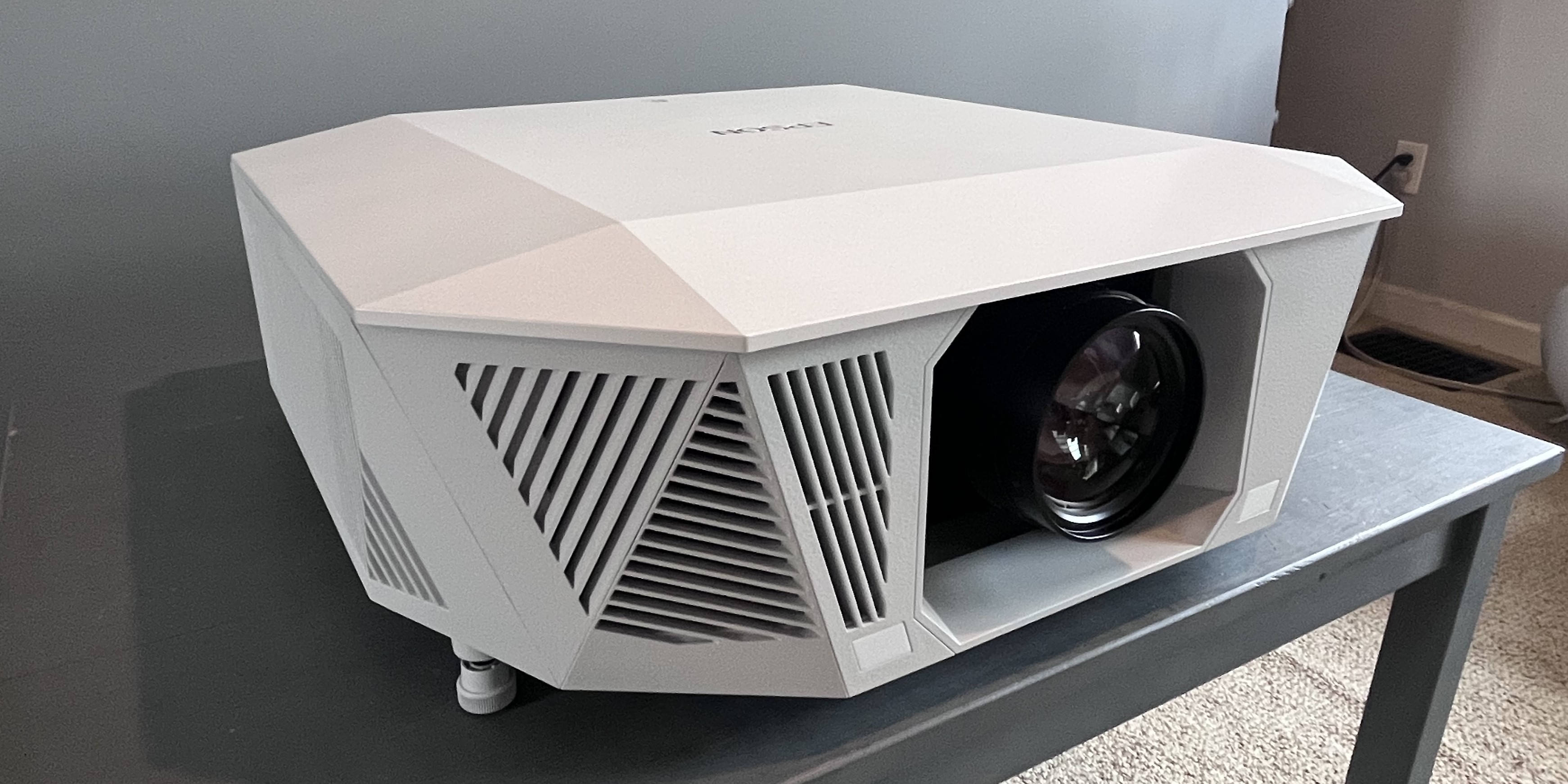TechRadar Verdict
The Epson QL7000 reaches brightness heights that other projectors can only dream of. This makes it a fantastic option for viewing sports on a big screen (up to 300 inches) in a bright room, but the QL7000 also looks great with movies, and it even has 4K 120Hz support for big-screen gaming. It has a compact, stylish design compared to other high-lumen projectors, which typically have an industrial look, and its flexible external lens options include ultra-short-throw for installations where you want a limited distance between the projector and screen. The QL7000 is pricey, but it’s also a unique offering that serves its specific purpose exceptionally well.
Pros
- +
Bright, crisp 4K picture
- +
Multiple lens options
- +
Good gaming features and performance
Cons
- -
Pricey
- -
Some loss of shadow detail
Why you can trust TechRadar
Epson QL7000: two-minute review
The Epson QL7000 is a projector designed for situations where you normally wouldn’t use a projector: well-lit rooms free of the dark furniture and gray walls typical of home theater environments.
What makes the Epson QL7000 uniquely qualified for such situations is its brightness, which goes far beyond what you get with the best projectors and even matches some of the best TVs. The QL7000 has a specified 10,000 lumens brightness, where a typical home theater projector tops out in the 2,500 to 3,000 range. That’s one of the reasons why the QL7000 costs $29,999 (around £22,400 / AU$47,000), though there are other good reasons as well.
The QL7000 is a 'body-only' projector that needs to be outfitted with a separate lens. Epson offers a range of special lens options, including long-throw ones that let you position it far from a screen, and ultra-short-thow ones that let you install it super-close. This level of installation flexibility is unique for a consumer-grade projector, especially one as small and lightweight as the QL7000. It also has an attractive case design that will let it fit in with your living room’s decor.
The QL7000 uses a laser 3LCD light engine, along with pixel-shifting, to display 4K images. Epson’s 32-bit QZX Picture Processor is used for upscaling and other types of processing, and it supports the HDR10 and HLG high dynamic range formats (but not HDR10+, a format we’re seeing increasing support for in projectors).
A pair of HDMI 2.1 ports on the QL7000 support 4K 120Hz and ALLM (Auto Low Latency Mode), making Epson’s projector, which also has a low 19.6ms input lag, a great option for gaming. But the real draw of the QL7000 is watching sports – its super-bright picture can easily hold up in rooms with the lights on, and games of all sorts have an incredibly immersive quality on a big screen (up to 300 inches max, in this case).
The QL7000 also looks great when you dim the lights for movie time, and with a variable laser light output adjustment, you can create a separate picture mode optimized for more traditional theater-style viewing. Epson’s high-lumen projector lacks the black level refinement seen in some of the top 4K projectors, but with such powerful brightness reserves aided by a dynamic contrast feature, movies watched on the QL7000 pack a strong visual punch.
Ultimately, the QL7000 is a specialized projector designed for multi-use environments, and it serves that purpose brilliantly. Between the projector itself and the separate lens, you’ll pay quite a bit to experience its stunning brightness in your home, but for some, it will be well worth the cost.
Sign up for breaking news, reviews, opinion, top tech deals, and more.
Epson QL7000 review: price and release date
- First available: March 2025
- Price: $29,999 (around £22,400 / AU$47,000)
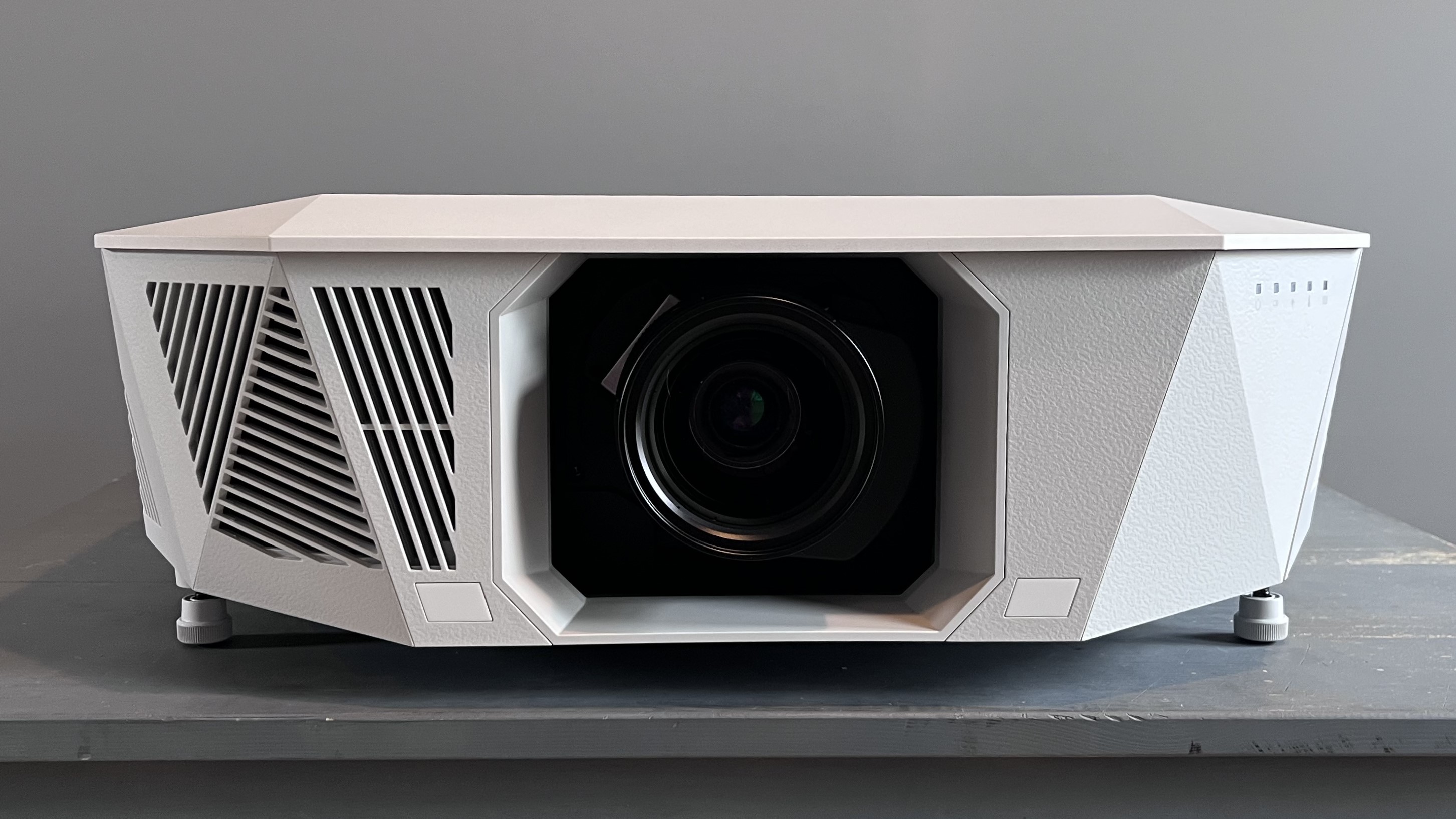
The flagship model in Epson’s Q Series projector lineup, the QL7000 lists for $29,999 (around £22,400 / AU$47,000). Prices for Epson projectors generally remain consistent over time, though discounts are occasionally tied to sales events. This price is for the QL7000 projector body only, with four lens options available at extra cost.
Other Q series models include the Epson QL3000 (6,000 lumens, $14,999) and Epson QB1000 (3,300 lumens, $7,999).
Epson QL7000 review: Specs
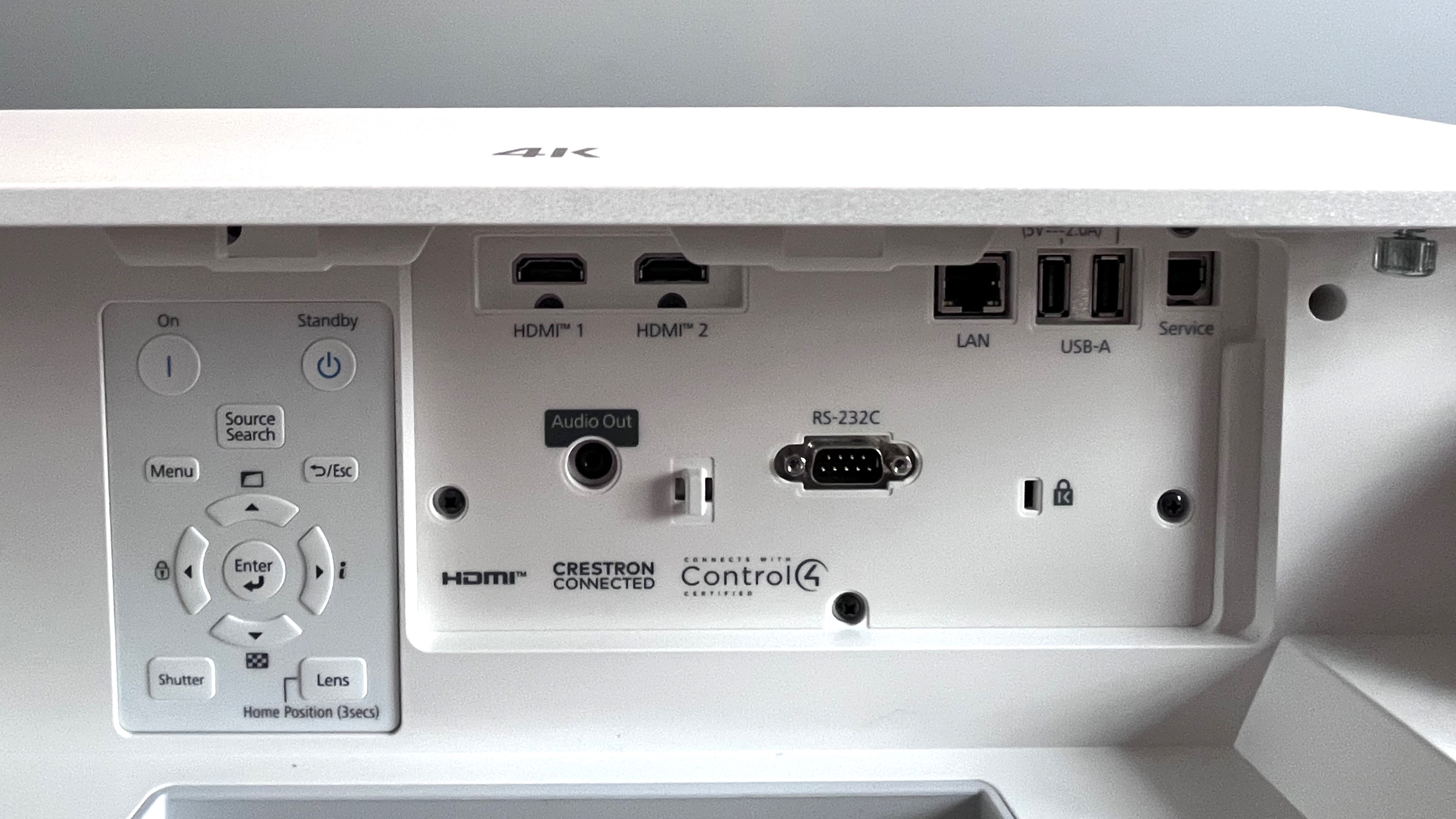
Screen sizes supported: | 60 - 300 inches |
Brightness (specified): | 10,000 lumens |
HDR support: | HDR10, HLG |
Optical technology: | Laser 3LCD |
Smart TV: | NA |
Connections: | 2x HDMI 2.1, 2 x USB-A 2.0, 3.5mm audio output, Ethernet, RS-232C |
Dimensions (W x H x D): | 22.8 x 7.5 x 22.4 inches (579 x 190 x 567mm) |
Weight: | 64.6 pounds/29.3kg |
Epson QL7000 review: design and features
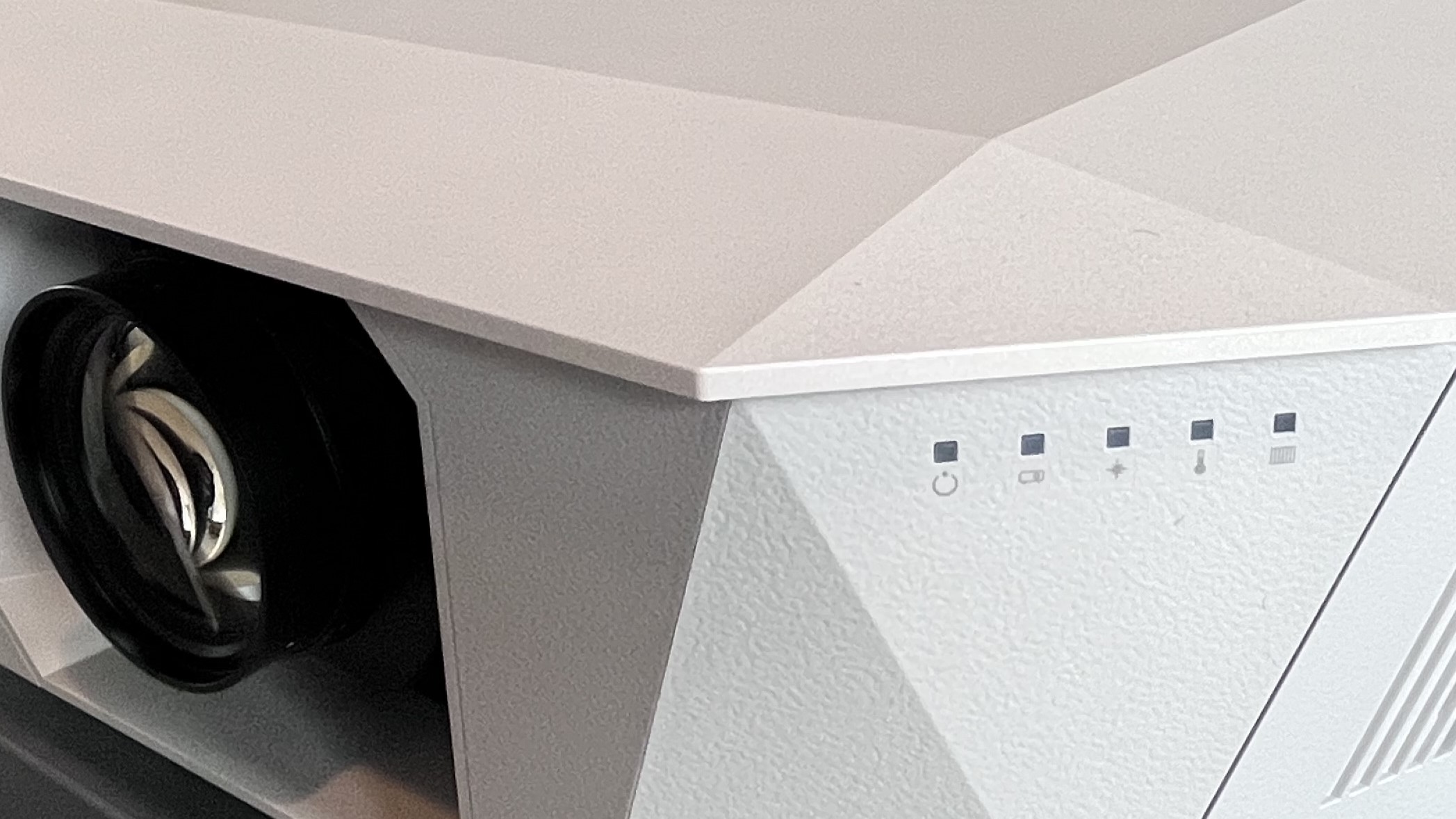
- Compact and stylish for a high-lumen projector
- Multiple lens option, including ultra-short-throw
- Dual HDMI 2.1 ports with 4K 120Hz and ALLM support
The Epson QL7000 represents a departure from the massive, industrial look of typical high-lumen projectors. It’s not only smaller and lighter than such models, but it has a stylish, angled case that’s available in black or white. This sets it apart as a projector that can blend in with a living room setting rather than dominate.
The QL7000 is a “body-only” projector that requires a separate lens. Epson sells a range of lenses, which allow for everything from long-throw to ultra-short-throw installation options. For this review, the company sent me a middle-throw option with a 1-1.6 zoom, +56 to -56 vertical shift, and +16 to -16 horizontal shift.
A laser 3LCD light engine in the QL7000 uses separate red, green, and blue imaging chips and employs pixel shifting to display a 4K image. Light output is specified at 10,000 lumens (white and color), around four times as high as typical home theater projectors, and the QL7000 also supports Epson’s contrast-enhancing UltraBlack technology.
The QL7000 uses Epson’s proprietary 32-bit QZX Picture Processor for upscaling, frame interpolation, and dynamic HDR tone mapping. HDR support includes HDR10 and HLG, but not the HDR10+ format supported by some home theater projectors, including the Epson QB1000.
Gaming features on the QL7000 include two 40Gbps HDMI 2.1 ports with 4K 120Hz support and Auto Low Latency Mode (ALLM). A 3.5mm audio output is also provided (like other high-end projectors, the QL7000 lacks built-in speakers), along with dual USB-A, Ethernet, and RS-232C ports. There is also support for Crestron, Control4, and other home automation systems.
The QL7000’s setup features include horizontal and vertical lens shift, keystone correction, and point correction. Since I installed the projector on a table for my testing, the setup was simple, with the trickiest part being inserting the lens into the projector’s front. Four adjustable feet are provided for leveling the projector during setup, though most QL7000 installations will use a ceiling mount.
A full-size, fully backlit remote control comes with the QL7000. The buttons are large and well arranged, but the functions seem mainly aimed at installation, with no controls to make quick adjustments to basic picture settings like brightness and contrast.
- Design and features score: 5/5
Epson QL7000 review: picture quality
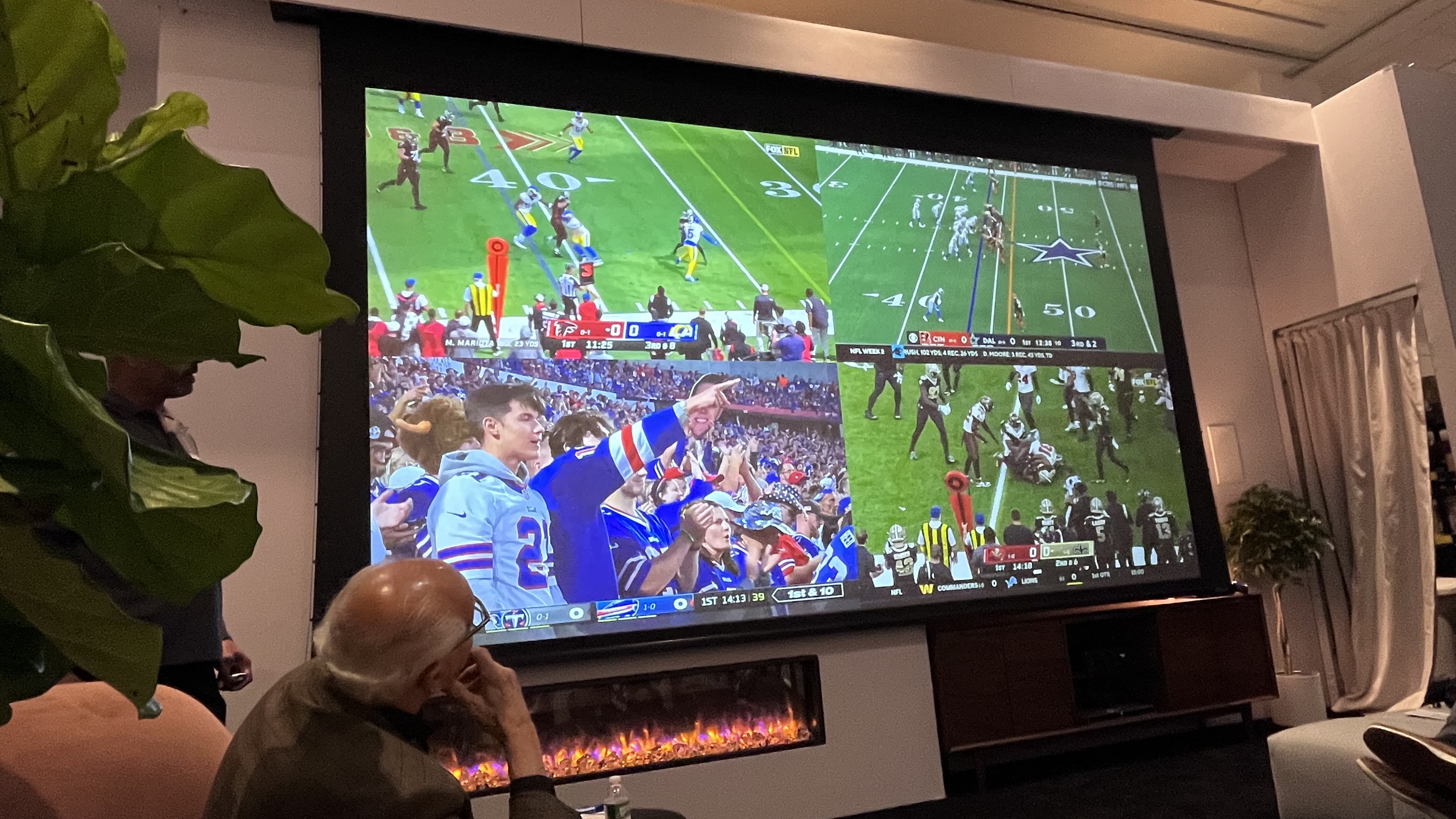
- Incredibly bright HDR images
- Impressive HDR tone mapping
- Very low input lag for gaming
First, let’s look at some measurements. With the QL7000 set to Natural mode (the most accurate picture preset) and a 100% laser light output setting, it measured 1,005 nits on a 10% white HDR pattern. It also measured 1,340 nits in Dynamic mode, which is the one I ended up using for most of my picture evaluation after calibrating the grayscale and color points. For the sake of comparison, the DCI (Digital Cinema Initiatives, a theater industry trade group) digital cinema specification calls for 300 nits brightness for projectors to properly display HDR.
Contrast ratio in Dynamic mode with Dynamic Contrast on and the laser light output set to 30% was 68,000:1. With laser light output set to 100%, that number was boosted to 253,600:1, an excellent result that many competing projectors, particularly DLP-based ones, would struggle to match.
The QL7000’s UHDA P3 color space coverage was 83.7% in Natural mode, and BT.2020 coverage was 61.8% in the same mode. Those numbers aren’t nearly as impressive as high-end home theater projectors like the JVC DLA-NZ800, which is capable of full P3 coverage, or certain triple-laser ultra-short-throw models like the Hisense PX3-Pro that can fully cover BT.2020. Even so, colors looked punchy on the QL7000.
Input latency tested with a Bodnar 4K Input Lag meter was 19.6ms with the QL7000’s Image Processing menu option set to Fast. That’s an excellent result for a projector, and combined with the QL7000’s ALLM feature, it sets the QL7000 apart as a great option for big-screen gaming.
The most exceptional aspect of the Epson QL7000’s picture is its stunning brightness. Even when watching in a bright room with light streaming in from windows, the crisp, clear 4K image beamed by the QL7000 had a true window-on-reality quality.
A main benefit to all that brightness is getting to watch sports on a very big screen. When I first saw a demo of the QL7000 at the 2024 CEDIA Expo, Epson had paired it with a 200-inch screen in a well-lit room, and the football games they were showing looked clear and bright. For my setup, I used a much more modest-sized 92-inch matte white, 1.1 gain Stewart Filmscreen Cima screen, with the projector’s lens surface situated at a 10-foot distance.
As luck would have it, both the NBA playoffs and the Stanley Cup playoffs were happening during my time with the QL7000. No shortage of sports to watch! Viewing in the daytime with room lights on, the QL7000’s exceptionally bright picture made a Pacers vs Bucks match look incredibly realistic, with the Pacers players' bright yellow uniforms retaining their rich yellow hue even in my brightly lit room. With a typical home theater projector, the same image would have had washed-out-looking colors, but that was not at all the case with the QL7000.
The same held for a Capitols vs Canadiens match, with the large, bright projected image giving me a rink-side seat. The red hue of the Montreal players’ uniforms popped against the rink’s icy, white surface, and the QL7000’s excellent motion handling made fast-action plays look completely solid.
With the lights in my room dimmed for movie viewing, the projector’s picture benefited from reducing its laser light output to 30%, which provided more balanced contrast. Watching a 4K Blu-ray of Dune, in a scene where Paul Atreides is tested by the Reverend Mother, her veil came across as a solid black, and there was good overall detail in the dark background.
The projector’s somewhat elevated black level – not unexpected in a model designed for high light output – caused some shadow details to be obscured. However, both lowering the gamma setting to -1 in the Advanced menu and setting black level to 0% in the Dynamic Contrast menu helped somewhat in this regard.
Watching a reference scene from the Bond film No Time to Die that I use to test motion handling, a panning shot across a craggy hillside cemetery showed only minimal judder and motion blur. With the QL7000’s Frame Interpolation mode set to Low, those artifacts completely disappeared, and there was only a slight motion smoothing penalty seen in the picture.
As a final test, I watched a few scenes from The Elephant Man on 4K Blu-ray. The QL7000 presented the film’s black-and-white image with excellent uniformity – there was no sign of tinting or variable brightness across various sections of the screen.
- Picture quality score: 4.5/5
Epson QL7000 review: value
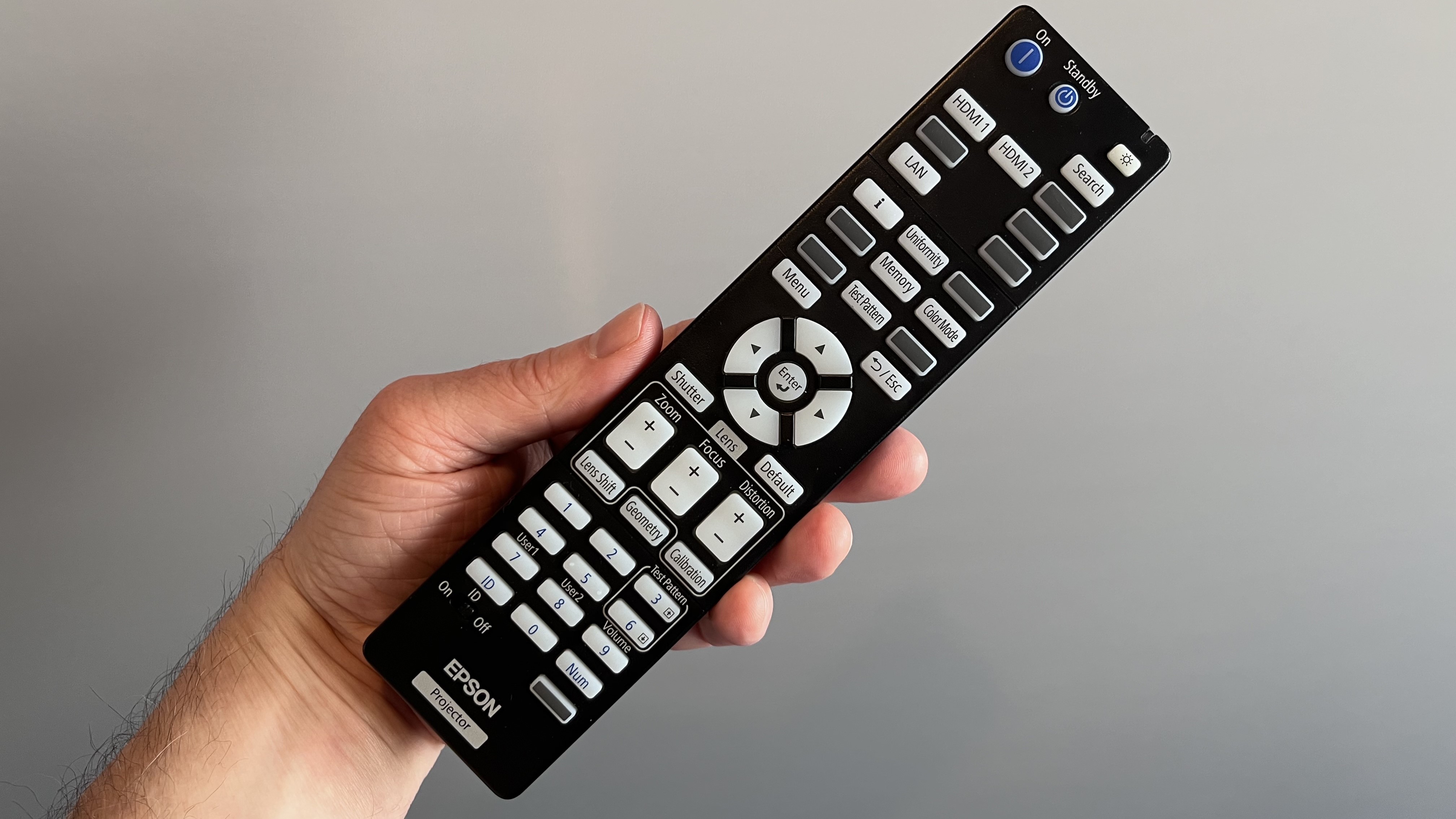
- Provides a larger picture than biggest-screen TVs
- Picture brightness a match for some TVs
- Unique option for bright-room viewing
At $29,999 (around £22,400 / AU$47,000), the Epson QL7000 crosses over into the money-no-object realm for projectors, making value almost a moot point. Its main benefit is in projecting a 4K image onto screens as large as 300 inches, and with a level of brightness that’s so powerful you can watch during daytime hours with room lights on.
You can now buy super-bright mini-LED TVs in the 100-inch range for substantially less, a reality that would put something of a dent into any consideration of the QL7000’s value. But 100 inches pales in comparison to 300 inches, and yes, people actually exist who want screens that big.
- Value score: 4/5
| Header Cell - Column 0 | Notes | Rating |
|---|---|---|
Features & Design | Multiple lens options, dual HDMI 2.1 inputs with 4K 120Hz support and ALLM, horizontal and vertical lens shift; stylish, compact design for a high-lumen projector | 5/5 |
Picture quality | Exceptional brightness and good contrast, though pictures lacking some shadow detail | 4.5/5 |
Value | A unique projector with a unique value proposition | 4/5 |
Should I buy the Epson QL7000?
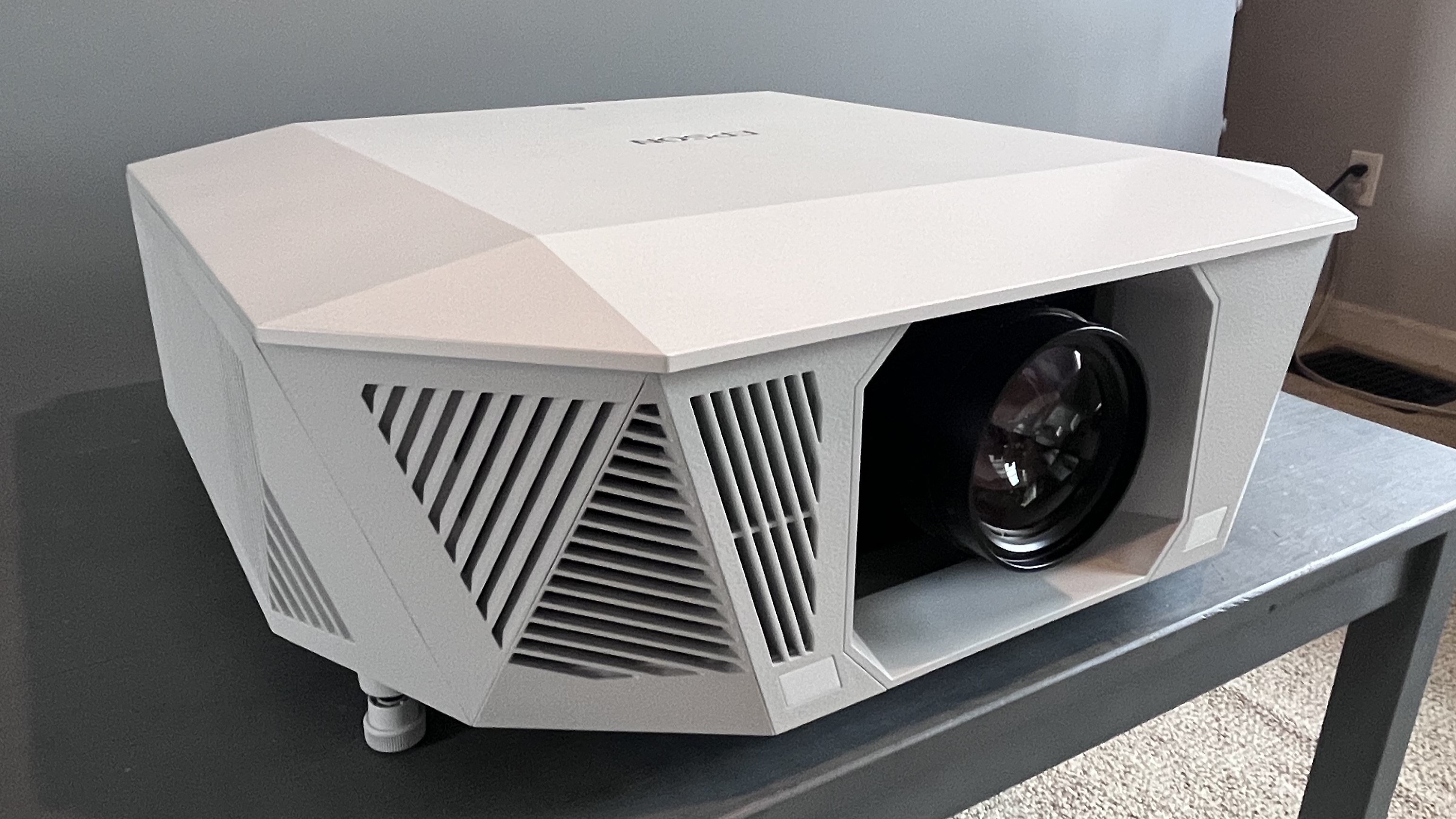
Buy it if...
You want to watch in a bright room
The QL7000 aces the task of beating daylight and overhead lights, making it a unique option for bright room viewing.
You want a great projector for sports
With a specified 10,000 lumens brightness, you’ll feel like you’re watching sports on a huge-screen TV and not a projector with the QL7000, and its excellent motion handling means fast-action plays look crisp.
You want a great projector for gaming
The QL7000’s dual HDMI 2.1 inputs support 4K 120Hz and ALLM. Input lag is also a low 19.6ms, which is excellent for a projector.
Don’t buy it if…
You want the best projector for movies
The QL7000’s exceptional brightness makes it ideally suited for sports. Movies look great on it as well, but there are other projector options that do a better job handling 4K movies with high dynamic range.
You don’t want to buy a separate lens
The QL7000 is a “body only” projector that requires a separate lens. The lenses are easy to install, but they add to the cost of an already pricey projector.
You don’t need ultra-large screen support
If you don’t need a projector that can support a 300-inch screen size, there are plenty of other good options available, though they won’t match the QL7000’s brightness.
Also consider...
| Header Cell - Column 0 | Epson QL7000 | JVC DLA-NZ800 | Epson QB1000 | Sony Bravia Projector 8 |
|---|---|---|---|---|
Price: | $29,999 | $18,999 | $7,999 | $15,999 |
Screen sizes supported: | 60 to 300 inches | 60 to 200 inches | 50 to 300 inches | Up to 150 inches |
Brightness (specified): | 10,000 lumens | 2,700 lumens | 3,300 lumens | 2,700 lumens |
HDR support | HDR10, HLG | HDR10, HDR10+, HLG | HDR 10, HDR10+, HLG | HDR10, HLG |
Optical technology: | Laser 3LCD | Laser D-ILA | Laser 3LCD | Laser SXRD |
Smart TV: | N/A | N/A | N/A | N/A |
Connections: | 2x HDMI 2.1, 2x USB-A, 3.5mm audio, RS-232C, Ethernet, | 2x HDMI 2.1, 2x USB-A (powered), IR, RS-232C, Ethernet | 2x HDMI 2.1(1 with eARC), 2x USB-A (powered), RS-232C, Ethernet | 2 x HDMI, 2x USB-A (powered), IR, RS-232C, Ethernet |
JVC DLA-NZ800
JVC’s 8K projector is a top choice for home theater enthusiasts and features special processing to get the best from 4K movies with HDR. It’s not nearly as bright as the QL7000, and at around $19,000, it’s far from cheap, but if you want the best projector for dark room viewing, look no further.
Read our full JVC DLA-NZ800 review
Epson QB1000
The QB1000 is the current pick as best projector for sports in our best 4K projectors guide because its 3,300 lumens specified brightness is higher than most models. If you can provide some level of dimming in your viewing space, you’ll save a substantial amount of money by opting for the QB1000 over the QL7000.
Sony Bravia Projector 8
The Bravia Projector 8 is another high-end home theater option that costs less than the QL7000 but doesn’t come close to matching its brightness. It uses Sony’s new XR processor for projectors, a tech derived from the company’s TV lineup that makes images look crisp and clean on the big screen.
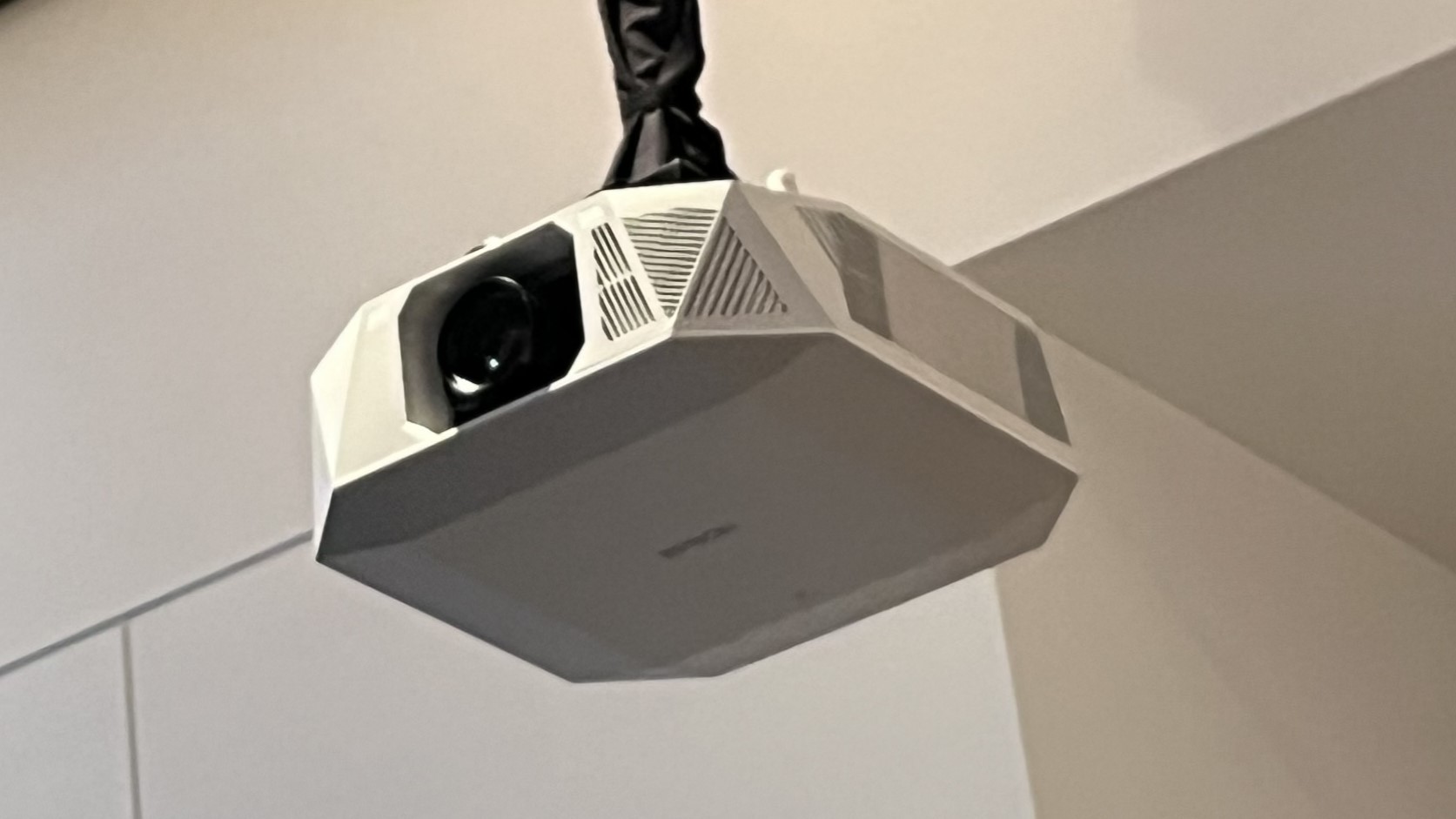
How I tested the Epson QL7000
- Tested at home, in a room with controlled lighting
- Measurements were made using Calman color calibration software
- A 1.1 gain Stewart Filmscreen Cima matte white projection screen was used for evaluation and measurements
When I test projectors, my first step is to use them for casual viewing to assess the out-of-box picture presets. The next step is to select the most accurate-looking preset (typically labeled Movie, Cinema, or, in the Epson QL7000's case, Natural) and measure the white balance (grayscale), gamma, and color point accuracy using Portrait Displays’ Calman color calibration software. The resulting measurements provide Delta-E values (the margin of error between the test pattern source and what’s shown on-screen) for each category, and allow for an assessment of the projector’s overall accuracy.
Along with those tests, I make measurements of peak light output (recorded in nits) for both standard high-definition and 4K high dynamic range using a 10% white window pattern. Coverage of DCI-P3 and BT.2020 color space is also measured, with the results providing a sense of how faithfully the projector can render the extended color range in ultra-high-definition sources. The final measurements are contrast ratio, which is the ratio of the brightest white to the darkest black that the projector can display, and input lag, which is measured using a Leo Bodnar 4K HDMI input lag tester.
First reviewed: May, 2025

Al Griffin has been writing about and reviewing A/V tech since the days LaserDiscs roamed the earth, and was previously the editor of Sound & Vision magazine.
When not reviewing the latest and greatest gear or watching movies at home, he can usually be found out and about on a bike.
You must confirm your public display name before commenting
Please logout and then login again, you will then be prompted to enter your display name.
